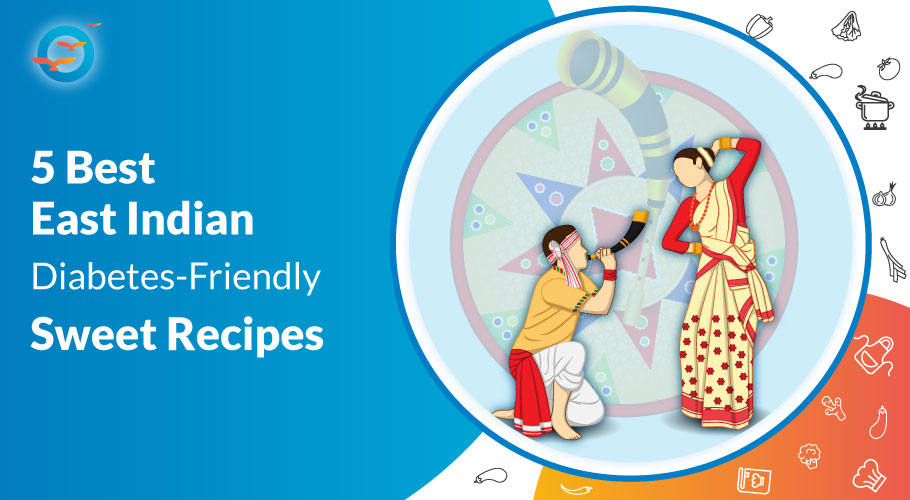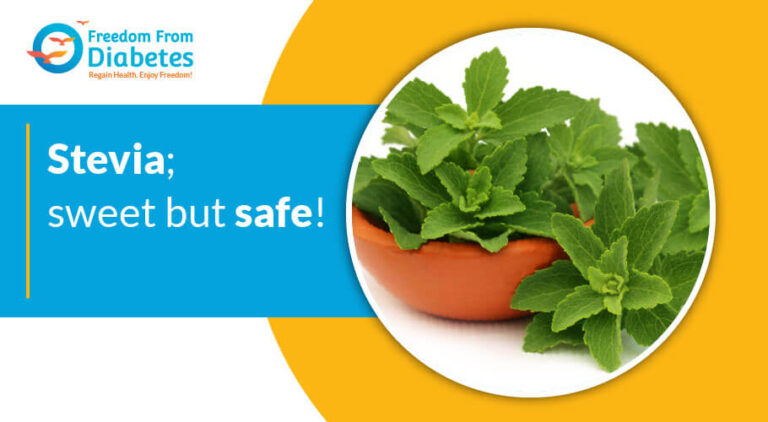
5 Best East Indian Diabetes-Friendly Sweets Recipes
Can diabetics enjoy East Indian sweets? Absolutely! The eastern states of India—West Bengal, Odisha, Jharkhand, and Bihar—are known for their rich and flavorful desserts. Traditionally, many of these sweets are made with refined sugar, ghee, and dairy, which can spike blood sugar levels. But with a few smart swaps, you can enjoy these sweets guilt-free.
At Freedom From Diabetes (FFD), we’ve reimagined classic East Indian sweets using low glycemic ingredients, plant-based alternatives, and natural sweeteners. These recipes allow you to celebrate traditional flavors while managing diabetes naturally.
After exploring East Indian breakfast, lunch, and dinner recipes in our earlier blogs, it’s time to satisfy your sweet cravings the smart way. Here are five diabetes-friendly East Indian sweets you can enjoy without worry.
1. Makhane Kheer – Creamy, Nutritious, and Light
Kheer is a beloved Indian dessert, but traditional versions use full-fat milk and sugar, which are not ideal for diabetics. FFD’s Makhane Kheer uses fox nuts (makhana) as the base and combines them with coconut milk for creaminess. Natural sweeteners like dates and stevia drops add sweetness without spiking blood sugar.
Why it works:
-
Completely dairy-free and vegan
-
Low glycemic index ingredients for blood sugar control
-
Light, easily digestible, and nutrient-rich
This version is perfect for festive occasions or weekend treats, providing the same indulgent flavor as traditional kheer while supporting your health goals.
2. Lobongo Latika (Laung Latika) – The Spiced Bengali Sweet
A classic Bengali dessert, Lobongo Latika is traditionally rich in sugar and ghee. FFD’s version is vegan and diabetes-friendly, using khapli wheat flour and dates instead of refined sugar and milk. The pastry is folded and sealed with a clove (lobongo), lightly cooked, and ready to enjoy without compromising flavor.
Why it works:
-
100% vegan and dairy-free
-
Refined sugar replaced with natural sweeteners
-
Preserves authentic taste and aroma
This treat is ideal for festivals, family gatherings, or a cozy evening at home. The clove adds a subtle spice, enhancing both flavor and digestion.
3. Khaja – Crispy Sweet Made Healthy
Khaja is a crispy dessert traditionally made with refined flour and soaked in sugar syrup. FFD has created a diabetes-friendly version by using whole-grain or healthier flour alternatives and natural sweeteners instead of sugar. The result is a crunchy, flavorful sweet that is safe for diabetics while keeping the traditional texture intact.
Why it works:
-
Uses low GI flour alternatives
-
Refined sugar eliminated
-
Perfectly crispy and delicious
Khaja is a festive favorite and a great option for sharing with loved ones, allowing you to indulge without worrying about sugar spikes.
4. Narkel Naru – Simple Coconut Sweet for Festivals
Narkel Naru is a popular sweet during Durga Puja and Bhai Dooj, traditionally made with coconut and sugar. FFD’s version uses fresh coconut and natural sweeteners, skipping refined sugar entirely. These bite-sized treats are easy to make, nutritious, and perfect for diabetics.
Why it works:
-
Fresh coconut provides fiber and healthy fats
-
No refined sugar
-
Quick, simple, and festive
This sweet not only brings nostalgia and festive charm but also offers a healthier alternative for diabetic-friendly celebrations.
5. Patishapta – Bengali Crepes Filled with Healthy Goodness
Patishapta are soft, thin crepes filled with coconut and jaggery, a Bengali classic. FFD transforms this dessert using khapli wheat semolina, dates, and stevia. This way, you get the authentic taste of patishapta without a sugar overload.
Why it works:
-
Healthier flour alternatives for lower glycemic impact
-
Naturally sweetened
-
Maintains traditional flavor and texture
Patishapta can be enjoyed as breakfast, brunch, or dessert. It’s soft, flavorful, and safe for diabetics, making it a versatile addition to your meal plan.
Tips for Making Diabetes-Friendly East Indian Sweets
-
Swap refined sugar with natural sweeteners like dates, jaggery, stevia, or monk fruit.
-
Use plant-based milk like coconut or almond milk instead of dairy.
-
Choose whole-grain or traditional flours like khapli wheat, whole wheat, or millet flour.
-
Add fiber-rich ingredients like makhana, nuts, and fresh coconut to slow glucose absorption.
-
Control portion size to enjoy sweets without overloading blood sugar.
These simple swaps make it possible to enjoy your favorite festive sweets without compromising your health.
Final Thoughts – Celebrate Sweets the Smart Way
Yes, diabetics can enjoy sweets—but choosing smart ingredients is key. At FFD, we focus on low glycemic ingredients, natural sweeteners, and plant-based alternatives to make traditional East Indian desserts both delicious and healthy. With these recipes, you can indulge guilt-free while maintaining blood sugar balance.
👉 Try these recipes today:
5 Best East Indian Diabetes-Friendly Sweets Recipes



